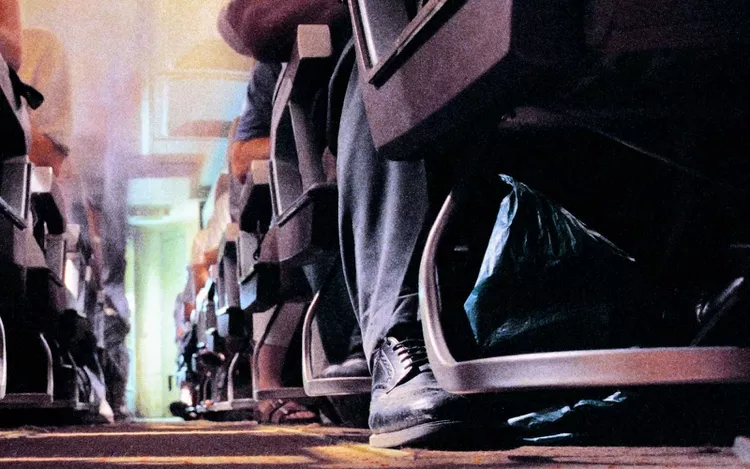First, don’t panic.
If you’ve ever slipped your shoes off during a long flight, you may have noticed that it’s just a little bit harder to squeeze back into them upon arrival. This is because it is extremely common for feet and ankles to swell—a condition technically known as gravitational oedema—when you fly. Fortunately, this is typically a harmless phenomenon.
The underlying reason is that sitting for extended periods causes blood and other fluids to pool in your feet. Consequently, this effect should only last for a short time and dissipates shortly after you walk off the plane.
6 Pre-Flight Stretches to Avoid Blood Clots
It is easy to alleviate or prevent foot and ankle swelling during a flight. Here are some effective strategies:
- Wear loose-fitting clothes.
- Stay hydrated by drinking plenty of water.
- Make an effort to walk around the cabin every hour.
If you find yourself seated with the seatbelt light on, flex and extend your ankles, knees, and legs as much as possible. Furthermore, avoid crossing your legs and reduce consumption of alcoholic beverages or sedatives, as these can further exacerbate swelling.
Moreover, individuals who exercise regularly are less likely to experience these symptoms, while those with a more sedentary lifestyle may find their ankles and feet swollen at the end of a long-haul flight.
Understanding Swelling and When to Seek Help
Swelling that does not subside after a few hours and the resumption of normal activity may indicate a more serious issue, such as a blood clot, also known as deep vein thrombosis (DVT). Other signs of this condition include swelling that occurs only in one leg or is accompanied by leg pain. It is imperative to seek immediate medical attention if you experience any of these symptoms.
Some travelers should consult a doctor before flying, particularly those at an increased risk of blood clots. Compression socks can help mitigate the effects of swelling, while a short-term prescription for a blood thinner may be necessary to prevent clotting. In some cases, a doctor may even recommend that you do not fly at all.
For the vast majority of flyers, however, experiencing swollen ankles and feet is usually not a significant concern. Therefore, getting up, moving around, drinking water, checking in with your body, and contacting a doctor if needed are crucial steps. Additionally, it is advisable to wear comfortable shoes during your travels.




